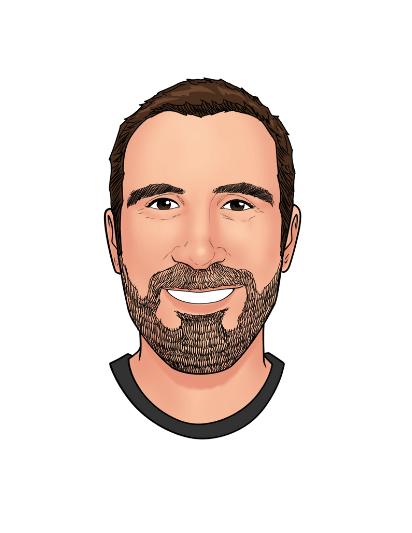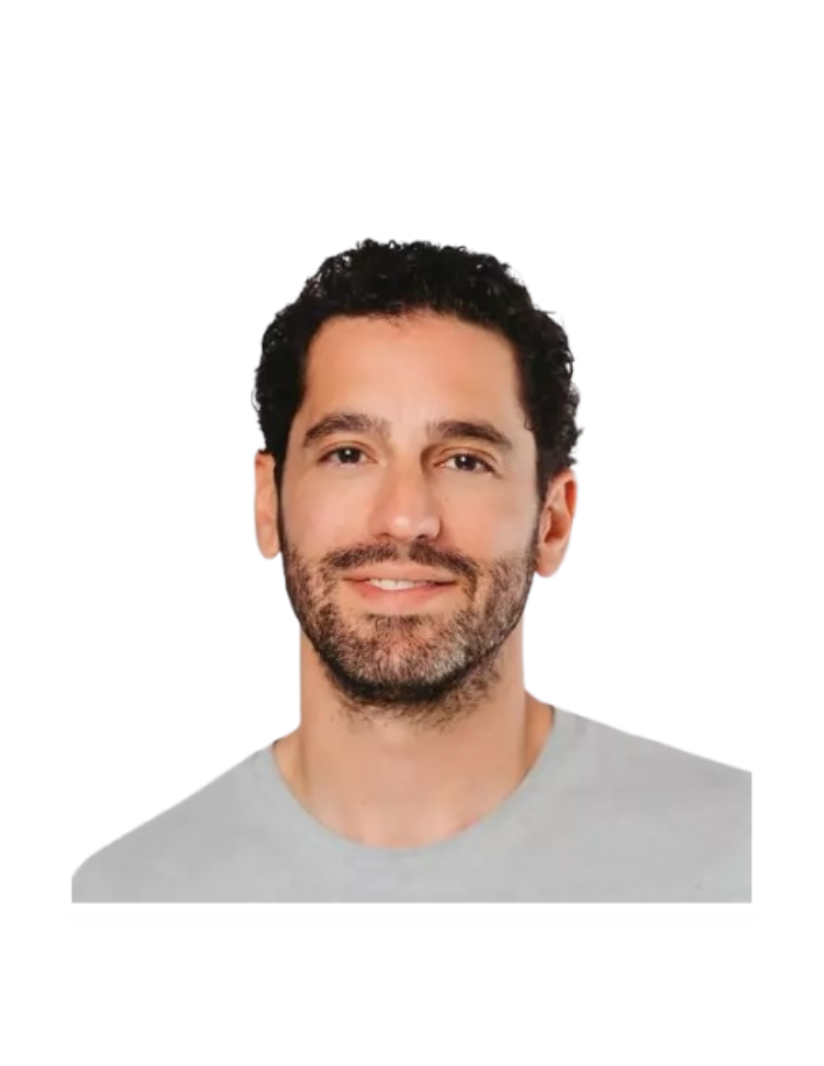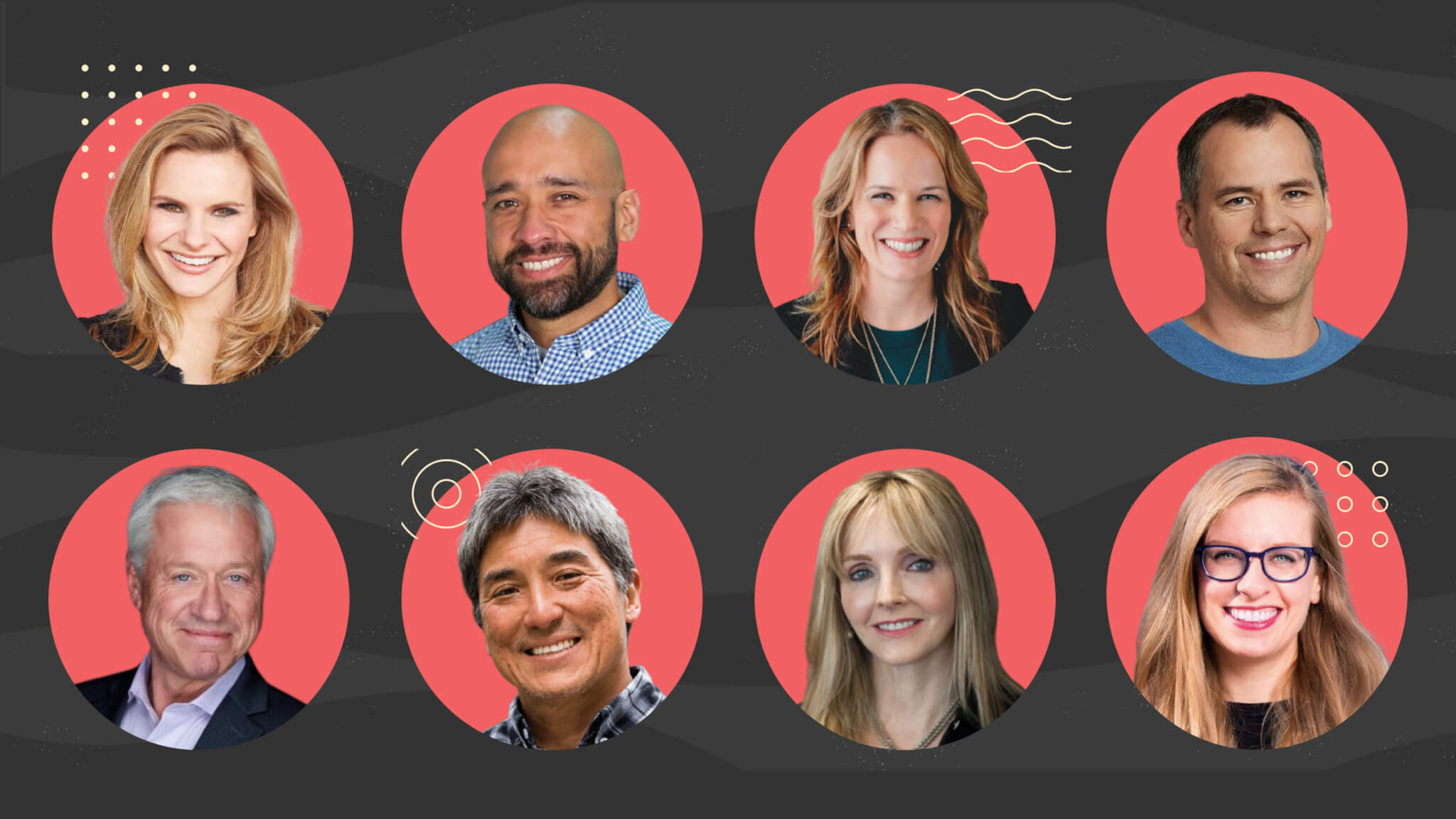
01
Episode 1 48 min
Kim Scott, Bestselling Author of ‘Radical Candor’ and ‘Radical Respect’ on Addressing Bias, Prejudice, and Bullying in the Workplace
Kim Scott, Author of ‘Radical Candor’ and ‘Radical Respect’
00:00
00:00

Unless you are a team of one, working together is an essential part of your ability to succeed and creating an environment that allows everyone to work together better.
In this episode
There’s no such thing as a bias-free workplace.
According to Kim Scott, leaders must proactively look for and root out bias, prejudice, and bullying in the workplace. Rather than waiting for these behaviors to escalate into harmful situations, she advocates for a shared commitment in your organization to dismantle bias, prejudice, and bullying head-on as it arises.
Kim Scott is a co-founder and the renowned bestselling author of the books ‘Radical Candor’ and ‘Radical Respect.’ She has been a CEO coach at renowned tech companies like Dropbox, Qualtrics, and Twitter. Before her coaching career, Kim was a faculty member at Apple University and led the AdSense, YouTube, and DoubleClick teams at Google.
In the first episode of season two, Kim Scott discusses the importance of creating conditions for your employees to do their best work. Reflecting on her own experience, Kim candidly shares the invaluable lessons gained from early leadership missteps, including failing to be an upstander for marginalized women and overlooking her own biases and prejudices. Sharing insights from her newly revamped book ‘Radical Respect,’ Kim offers practical strategies for leaders to recognize and address bias, prejudice, and bullying in the workplace. She emphasizes the need for establishing a shared vocabulary, norm, and commitment across your organization to publicly address bias, whether in remote or in-person work settings. Finally, Kim explains the business case for addressing bias and bullying, as diverse workforces perform better and retaining diverse talent is crucial for success.
Tune in to discover Kim’s tactical and effective strategies for fostering a culture of radical respect in your organization! And don’t forget to pre-order Kim’s latest book Radical Respect, coming out on May 7, 2024.
Like this episode? Be sure to leave a ⭐️⭐️⭐️⭐️⭐️ review and share the podcast with your colleagues.
04:36
Restructuring ‘Just Work’ into ‘Radical Respect’
10:16
Distinguishing between bias, prejudice, and bullying
18:13
Disrupting bullying without overstepping
23:14
Preventing bias and prejudice in the workplace
26:55
Creating a shared commitment to disrupting bias
33:35
Communicating standards in ways people can hear them
39:49
The business case for addressing bias and bullying
44:37
Kim’s underrated leadership advice
Resources mentioned in this episode:
- Follow Kim on LinkedIn, X, Instagram, and Medium
- Pre-order Kim’s new book Radical Respect
- Listen to Kim’s podcasts Radical Respect and Radical Candor
- Check out Kim’s book recommendations:
- Robertson Davies
- Orlando by Virginia Woolf
- Song of Solomon by Toni Morrison
- Middlemarch by George Eliot
- The Color Purple by Alice Walker
- Learn more about Project Include
Transcript
Kim, welcome back to the show.
Kim Scott 03:48
Thank you so much. I’m excited to be here to be back.
Aydin Mirzaee 03:51
Yeah, it’s very excited to have you back on we were just chatting about this. The first question that we always like to ask on the show is when he first started being a manager or leader, what was the mistake that used to make? And but you’ve already answered this question. And you have a very famous story, the story of how of Bob and how you wrote the book, ‘Radical Candor.’ And so we thought we’d put a spin on this question for you. And you know, ask you, since you’re Kim Scott, the author of radical candor, the people who know and love in terms of management advice and everything else, does Kim Scott make management mistakes these days? And so we wanted to ask you like, is there something maybe last week in the last few years? A mistake that you’ve recently made and that you’ve learned from in the recent past?
Kim Scott 04:36
Yes, I mean, I can tell you a mistake that I made five minutes ago, but let’s go to which was a less important one. Let’s go to a really fundamental mistake. Like if you write a book about feedback, which ‘Radical Candor’ very much was you’re bound to get a lot of it and indeed I did. And the most valuable feedback that I got about ‘Radical Candor’ actually prompted me to write ‘Radical Respect.’ And what happened was, I was at a tech company in San Francisco. And I was giving a ‘Radical Candor’ talk and the CEO of that company had been a colleague of mine for the better part of a decade, a person I like and respect enormously. She’s also one of two few black women CEOs in tech, or frankly, in any other sector. And when I finished giving the talk about ‘Radical Candor,’ she pulled me aside and she said, Kim, I’m excited to roll ‘Radical Candor’ out, it’s gonna help me build the kind of culture I want, and to help us be more innovative. But I gotta tell you, it’s much harder for me to roll out ‘Radical Candor’ than it is for you. And she went on to explain to me that as soon as she would offer people, even the most gentle, compassionate criticism, they would call her an angry black woman. And I knew this was true as soon as she said it to me. And I also knew how unfair it was that she would get called this. She’s one of the most even keeled, gentle, cheerful people I’ve ever worked with. And as soon as she said this, to me, I had four realizations at the same time, the first thing that I realized was that I had failed to be an upstander, I had failed even to notice the extent to which she had to show up, unfailingly cheerful and pleasant in every meeting we had ever been in together, even though she had want to be ticked off about as we all do, from time to time. And so I’d failed to be an upstander. That was my first real, so I shouldn’t fail to be the kind of colleague that I imagined myself to be. The second thing that I realized when she said this, to me was that I had really failed to acknowledge the things that happened to me as a woman in the workplace, actually, as a white woman in the workplace. And that’s kind of hard for the author of a book called ‘Radical Candor’ to admit that I was in denial that I’d been in denial. And I think I was in denial, in part because I never wanted to think of myself as a victim. But even less than wanting to think of myself as a victim that I ever want to think of myself as the culprit. So the third thing that I realized was that I had been most deeply in denial about the times when I had caused people harm with my own biases with my own bullying, even like I don’t intend to be bias, I don’t intend to be a bully. But when you get a little bit of power as manager, sometimes you do those things, you’re even more likely to do them. So that was the third thing I realized. And then the fourth thing I realized was that I imagined myself as a leader, that I was creating these BS free zones where everybody could do the best work in their life and enjoy working together. And by being in denial about bias, prejudice, and bullying, and how those things interfere with a culture of radical candor, I had failed and my desire to create the kind of environment that I wanted to create as a leader. And so that was a lot to take in. That was that was a big drink of water. And it was really prompted me to write my next book, which is coming out May 7, ‘Radical Respect.’
Manuela Barcenas 08:05
Kim we’re really excited to ask you about how leaders and managers will be able to prevent making these mistakes. But before we do that, I wanted to ask, ‘Just Work’ was released in 2021, and ‘Radical Respect’ is a rewrite of just the work. So do you mind telling us the story behind that was that also related to a recent mistake?
Kim Scott 08:30
I think that the so just work, I got feedback on the title. And a lot of people thought that just work, man just get back to work. They kind of mistook it for returned to Office book, which it is not. I’m a huge believer in remote work and hybrid work environment. So I think that was one of the problems with the title just work. The other problem is that the book was too long, I got some feedback that it was. So I shortened I cut like 40,000 words from the book when I did the rewrite. And then the other bit of feedback I got about just work is that I started out that book talking about things that people harmed could do. And people were expecting a book more about leadership things that leaders can do. So I sort of did some restructuring of the book. And I focused a little bit more on on the practical tactical things that folks can do in the rewrite. So I think it’s radically rewritten and radically better
Aydin Mirzaee 09:30
Incorporating the radical name, obviously, it feels like it’s a continuation of, you know, some of the work that you’ve done in the past. And I think I’m also in favor of this new title.
Kim Scott 09:39
Good.
Aydin Mirzaee 09:40
That’s the thing that you I guess you changed about it. And as you know, this podcast is mostly about you know, helping people build companies where great management happens. Yeah. And so I am curious, so what are some of the things so if someone is listening to this and says, you know, I want to build a company or I want to build my team or or so things like bias or prejudice, bullying don’t happen. What are some things that you can do to build a place like that? But even before we go there, one of the things I’m curious about is how do you even know if that stuff is happening in your company? Like, how do you know if you’re doing a good job a terrible job?
Kim Scott 10:16
So here’s the good news, it’s very easy to answer the question, how do you know if it is happening? I can already promise you like, No, there’s no such thing as a bias free workplace. Unfortunately, I wish I could say I can point to this company where they have eradicated bias, I cannot. So it’s happening. And so one of the things that I encourage leaders to do is to go looking for it, rather than waiting for people to come tell you about it, to get very proactive about preventing these things. The first thing that I would suggest that leaders do is to take the time to distinguish between bias, prejudice and bullying, because I think that one of the reasons why we don’t address these problems as leaders, or as upstanders, or as people who are experiencing these things, is that we conflate them as though they’re the same thing. And it’s really hard to know how to respond if you’re not sure what the problem is. So I want to I want to start by offering some super simple, overly simple definitions that are not meant to be comprehensive, but that are meant to help you distinguish between what may be going on so bias, I’m going to define is not meaning it’s usually unconscious. Once you hold up a mirror, the other person’s like, oh, I don’t really believe that they want to change it. So that’s bias, not meaning it whereas prejudice is meaning it. Prejudice is a very consciously held belief, usually reflecting some unfair and inaccurate stereotype. And you’ve got to respond, obviously, to something that people don’t intend to do, versus a belief that they have as a leader, you got to respond to those two things very differently. And bullying, there’s usually not a belief conscious or unconscious going on with bullying, it’s usually just being made. So not meaning it is bias, meaning it is prejudice and being mean as bullying.
Manuela Barcenas 12:11
Do you think bullying is the easiest one to see? Like at firsthand or to or to notice in your company?
Kim Scott 12:19
No, I don’t. Because I think if you’re a leader, it depends on where you are in the organization. But if you’re a leader, the people in your organization who tend to bully others are probably not trying to bully you, the leader, they tend to kiss up and kick down. And so if you think about bullying, they’re often pretty, they often get away with it, because they’re pretty good at hiding that behavior. And so that’s one of the reasons why I recommend to leaders when they design, sort of 360 performance management systems, that they incorporate feedback up, down and sideways, and that they create an environment where it’s expected where challenging bullying is expected. And so what are the three things three most important things that leaders can do about bullying, they can create conversational consequences for bullying. And so if they notice it, in the moment, they need to learn how to shut it down not to let it pass, but they also need to teach the whole organization, how to be upstanders in the face of bullying, they also need to create compensation consequences, they need to design their performance management systems to identify bullying and make sure that people who do bully others don’t get high ratings. So there was one company where I worked, where they said that there are three things you’re gonna get rated on in a performance management system, your results, obviously, but also your teamwork, and your innovation. And if you got a bad rating, and teamwork, if people complained about your teamwork, you just couldn’t get a good rating, no matter how good your results are. And then the third thing as a leader you need to do is you need to make sure that you’re not promoting people who bully others. And then at a certain point, if you once you’ve given that person feedback, they don’t change your behavior. You need to fire that person actually for bullying others, you know, it’s better to have a hole than an asshole on your team. Because the problem with bullying is that it often can benefit the bully, but it hurts the whole team at hurts your collective efforts. And your job as a leader is to optimize for the collective efforts of your team.
Aydin Mirzaee 14:38
You know, Kim, when you say bullying, you know obviously the thing that comes to mind is you know the high school bully or bullies in school. Yeah, like do you have a story of just a modern place bullying what it looks like? Is it super obvious to know what a bully is or what they’re doing? Or like maybe you’re doing it but not doing it on purpose? Like is there a story where people can say oh, That’s what bullying is in the workplace and what it looks like.
Kim Scott 15:03
So I’ve tried to share stories about myself as the person who caused harm often in this book because it is, especially when you become a leader. Even if you don’t intend to bully others, your behavior may be interpreted as bullying, and sometimes it may actually be bullying. So I will give you a story. I was recording a podcast with Russ Laraway who I started a podcast with a bunch of years ago, and the early version of the ‘Radical Candor’ podcast. And in this podcast, we were talking about Amy Cuddy and the power pose, and I love Amy Cuddy. I really appreciate her research. And I sort of felt like she had been bullied recently online, and really by the academic community. What I didn’t know was that she herself had said that even though there was some some of her research, early research showed that when you do the power pose, Amy Cuddy is the woman that who did the famous TED talk about power pose, early research indicated that when you do a power pose, it actually increases your testosterone levels. Further research showed that it didn’t, and Amy herself had said this publicly, I didn’t know that Russ Laraway, my co host did know that. And so when I said on the podcast, that it increased your testosterone levels, Russ interrupted and corrected me as he should have done. And I sort of jumped down Russ’ throat, and and I said, Oh, Russ, what would you know about it, you were born doing a power pose. And everyone in the room, everyone else in the room besides Russ was a woman and everybody burst out laughing, and sort of humiliated Russ. Now, that was obnoxious behavior. On my part, I was sort of using the fact that he was a minority of one in the room. And also it was kind of like, it’s tempting to feel in those moments like when, cuz often in my career, I was, I was a minority of one, it’s often easy to feel like turn around this fair play. And so now that I was in the majority, I was using that experience to sort of bully Russ. So I shouldn’t have done that. And Russ, at the time, didn’t feel like he could challenge me on that. But then a bunch of our podcast listeners wrote in like, I can’t believe you behaved that way. So like, was this whole big thing. So that’s a small example of me being a bully. I’ll share another example. Any thoughts on that story? And then I’ll share another story of me as a bully like this happens without you’re intending it necessarily to happen.
Aydin Mirzaee 17:53
It’s awesome that you’re telling this story, because that could have gone unnoticed, right? If there’s no audience, yeah, might have been a thing. And this is why I think this is super helpful. Because when we use a term like bullying, it’s important to know like, what it looks like, so that you can be more hyper aware. And so yeah, I think that’s a great story. And definitely drives point home.
Kim Scott 18:13
Yeah. So here’s another story. You can tell me if you think it’s also a useful story. So I was working at a tech company, and we were launching a new feature of the product. And there were a bunch of people working late one Friday night, we were going to launch it 2am On Saturday, and a woman on my team came into my office in tears, and this product manager had sort of bullied her. And this is a warning to people in a position of power. I was significantly more senior than this product manager who would bullied her. And I gave in to the temptation to out bullied the boy. Don’t do that. And so I called this guy up, and I mean, I ripped in. Absolutely. And I whenever it feels too good. Stop. You know, I felt like God. So you know, I was like The Incredible Hulk. A couple of days later, I was thinking about this. I probably shouldn’t have been so harsh on this guy. But I didn’t do anything about it. I didn’t call him and apologize as I should have done. But it always comes back to bite you. So fast forward a couple of years. My husband also worked at the same company and he wound up working with this same product manager on a different product. And when that guy realized that my husband was my husband, he like got this horrified. Look, he’s like you’re married to Kim Scott. That’s awesome. husband came home was like What did you do to that guy? So much belatedly, I had the opportunity to apologize.
Manuela Barcenas 19:53
May I ask if you were able to apply your own advice like if you could go back in time because this person was bullying another person. And I’m assuming that as a more senior leader, you had to call that out. You had to like, tell him, it’s not okay to do this. Yeah. So what was wrong about it? And how would you go about it? If you could go back in time?
Kim Scott 20:12
Yeah. So I think that whenever you feel angry, and you’re in a position of power, beware, that’s my first suggestion. I think the right response to bullying is a ‘you’ question, like what is going on for you here. So if I could go back in time, what I would have done is I would have picked up the phone, and I would have called this guy and I would have said, look, so and so is in my office, we’re gonna have a three way conversation. I think you treated her disrespectfully what was going on. And that would have created a situation where I was disrupting the bullying and I was giving him an opportunity to apologize to her. And we could have moved on past it, you know. And so I could have disrupted the bullying. Without becoming a bully myself. I think that when you want to be an upstander, or a leader in a situation where you feel like someone is getting bullied, it’s very tempting to over exert your power in that situation to abuse your power in that situation. And so anytime you feel you know, that scene, where the Incredible Hulk like grabs Loki, Loki is like I’m a god, and the Incredible Hulk grabs him by the feet and like, bang, bang, bang, bang. Puny God, The Incredible Hulk says, like, anytime you feel like The Incredible Hulk, you’re probably doing the wrong thing. I think other examples of disrupting bullying that go wrong, are sometimes you may feel like you’re the knight in shining armor, protecting the damsel in distress. And the thing is, I promise you that woman does not want to be cast in the role of the damsel in distress. So if you’re casting yourself as the knight in shining armor, you’re probably overstepping. Another very common example of a bad way to disrupt bullying is white savior complex, like anytime you think that you’re standing up for someone, instead of standing up to injustice, you’re probably overstepping.
Aydin Mirzaee 22:19
What I love about just the words that you used, you know, for example, when it feels too good, or when you have power, and you feel angry, these are the things that take a long time, I just want to make sure that the audience actually appreciates this, because these are great triggering moments, right? That you can almost prime yourself. It’s basically harnessing your gut instinct. And without these triggers, you would basically have to learn these lessons by making those mistakes and then developing the system. But Kim has so graciously offered her a trigger system, everything she’s learned on that I thought that that was super amazing. And then on the management system, so we talked about how you find this stuff out. So maybe having really good three, six year reviews up, down and sideways for feedback. So these things can be detected. So if you have a system in place where you can interrupt these things from happening in your company, what are other things that you can do? So you know, if you’re leading an organization, and you really want to eradicate bias and prejudice and bullying and everything else? What else should you be doing?
Kim Scott 23:24
Yeah, when it comes to bias, it’s really useful to sit down with your team, and to talk to them about how you’re going to disrupt bias and how you’re going to disrupt it in the moment. I think that this is kind of in the moment correction that needs to happen. Because if we ignore bias, when we notice it, or if we fail to notice bias in a meeting, then what happens is that we reinforce it. I mean, bias is a thought pattern. And so it’s really important to disrupt it when we notice it. So I recommend an i statement that you teach people to say I don’t think you meant that the way it sounded or something like that. A great story about this comes from Aileen Lee, who started a venture capital firm. She told me a story about going into a meeting with two colleagues who are men, and she had the expertise that was going to win her team the deal. So she sat down in the center of the table. And then her two colleagues who were men sat to her left, when the other side came in, and the first person sat across from the guy to her left. The next person sat across from the guy to his left and then everybody else filed on down the table, leaving Aileen dangling by herself ever seen by a show up that way. You know very often it’s like who decides to sit next to him or across from him? But Aileen was undeterred. She started talking, and when the other side had questions instead of directing their questions at her, they directed them at her two colleagues who are men. It happened once it happened twice and had happened a third time. And finally her colleague, Steve stood up and he said, I think a lane and I should switch seats. That was all he had to do to totally change the dynamic in the room. So that’s an example of an if statement. And I stayed in kind of holds up a mirror. And why did he do that he did that, in part because he likes a lane, and he didn’t like seeing her get ignored. So there’s kind of an emotional slash almost moral side to this. But there’s also a practical side of this, he also did it because he just wanted to win the deal. And he knew that they wouldn’t win the deal. The other side wouldn’t listen to a lane. And then there’s an efficiency side of this, he also did it because he understood that it was easier for the other side to hear it from him than it would have been for them to hear it from Aileen. And so it was more efficient for him to disrupt it. Not that Aileen was incapable of speaking up for her self, but it was just easier for him to do it. So that’s an example of an upstander disrupting bias in the moment. Now, that almost never happens. That, That story is like such a simple story. And why doesn’t it happen all the time, because we don’t know what to say, in these moments. And so sitting down with your team, and talking to them about what’s the I statement we’re going to use, and if you don’t like an if statement, one of the things we do on my team is we wave our purple flag. And so if I wave this purple flag, it means there was just something biased, somebody just did something, or said something that was biased. And so sit down with your team and talk to them about like, what’s the word or phrase that you all are going to use to disrupt bias when you notice it. And then you also want to talk to your team. So that’s step number one is shared vocabulary. Step number two in disrupting bias is to have a shared norm about how to respond when it’s you whose bias has been pointed out, because I don’t know about you all. But for me, when someone points out that I’ve said or done something biased, I feel ashamed, I can tell you where I feel it in my body, it’s like the backs of my knees start to tingle, it’s the same physical sensation that I get, if my children walk too close to the edge of a precipice, like it’s a real fear, it’s almost a panic response. And we rarely respond at our best when we’re in that kind of panic brain. And so helping people learn how to say when someone points, we got to normalize pointing out with bias. So helping people learn how to say, thank you for pointing it out. Either I get it, and I’ll work on not doing it again, or I don’t get it. And that saying I don’t get it is like really hard, because now I’m doubly ashamed. I’m ashamed because I’ve harmed someone else or upset someone else. And I’m also ashamed because I’m ignorant. I don’t even know what I did wrong. And yet all of us are in that situation, I can promise you multiple times a day. And so once we come together to help each other by pointing it out, and also to be able to manage our own emotions, and our own defensiveness when we’re the one who caused harm, who said or did the thing is really helpful. And then the third thing you need to do as a leader is to make sure that you are pushing your team to have a shared commitment to actually do this. It’s so easy to talk about disrupting bias is really hard to do it even though it’s three simple steps. It’s like there’s nothing. There’s nothing. It may be simple, but it’s really hard to do.
Fellow 28:29
Does this sound familiar? You wake up, take a look at your calendar and see it’s filled with meetings, project meetings, stand ups, weekly check ins, one on ones, town halls, and those are just the internal ones. Some are productive, but some are a total waste of time. How often have you thought about the time your organization is wasting in unnecessary meetings? I bet a bunch now consider that in the US. There are 55 million meetings happening each day and 85 to 90% have no agenda fellow is on a mission to solve the meeting problem by offering the only meeting management tool that optimizes every part of your team’s meeting workflow with 500 Meeting templates, integrated action items, collaborative meeting notes and AI recording and transcription fellow helps teams and organizations get more done with less go to Fellow.app to start your free trial and start having fewer more effective meetings today.
Manuela Barcenas 29:31
Kim, you’re saying that most people feel ashamed if someone calls them out. Right? I think that’s bias. Do you think that for maybe an organization or a leader who is like starting to make to create awareness around this? It’s better to share this feedback in a one on one setting. Like for example, if I noticed that someone in a meeting said something that was biased, is it better to then perhaps do it like you know, in a one on one and say like, Hey, I thought what you said here was not right because of these reasons. Instead of doing it in a public setting or team meeting? What are your thoughts on that?
Kim Scott 30:03
I think that if you haven’t worked with your team to create this expected system of bias disruption, you’re correct, it’s better to say it in private. However, I believe it’s better to do it in public as long as everyone is expecting it. Because it goes back to this problem about bias is like this unconscious thought pattern. And every time we let it go by silently we reinforced the bad pattern. And so what we wanted, like we, as human beings, were pattern makers, and Ruha Benjamin talks about this in her book, ‘Race After Technology.’ And as pattern makers, we can create good patterns, or we can create bad patterns. And I think in order to create a better pattern, we need to disrupt it publicly. I don’t view this as like public criticism. I view it as a public correction. It’s almost like, imagine we were playing baseball together and somebody’s running from first to second base, and they’re about to get out, you yell back, like you don’t wait till after the game to say, oh, you should have really run back you like want to correct it in the moment? And that’s how I view bias disruption.
Manuela Barcenas 31:12
That’s a great way to see it. And yes, I asked, because I think in your book, ‘Radical Candor,’ you do advise that critical feedback should be given in a one on one setting, but praise can be given in public, right? Yes. But it’s really, really important to understand that this is not criticism, it’s more like calling out something that nobody in the team should be doing. And we all know that this is like, expected of people to then it’s okay to call it out in public setting.
Kim Scott 31:34
Yes, and I think you said something that’s important. No one on the team should be doing it. And everyone on the team is doing it. Like bias is not… The reason I don’t think about it as criticism is that we are all by everyone on we all have our biases. And only when we’re able to hold up a mirror to biases do we manage to correct them. And so it’s essential that we correct this inevitable human flaw in public so that we can all get on the same page. So nobody should be doing it and everyone is doing it. You’re not shaming someone to point out bias publicly, you’re you’re helping them and you’re helping the whole team.
Manuela Barcenas 32:19
On that topic. I have a quick follow up question which is on rewarding people.
Kim Scott 32:24
Yes.
Manuela Barcenas 32:24
So at Fellow we have these weekly town halls where we celebrate milestones we give shout outs? Do you recommend anything like that related with people who are for example, upstanders, like rewarding them or celebrating them in front of others?
Kim Scott 32:38
Yes, I think that celebrating upstanding is a great idea. I mean, that’s something that definitely merits public praise. And I also the thing that I love about this idea is that when it comes to bias, prejudice and bullying, we so often tell the bad stories. And I think one of the things that we need to do in order to start addressing these problems and putting some wins on the board, is to focus on on positive target identifications. That’s why I when I talk about bias, I tell the story about about the upstander, who did the right thing, because it is that helps other people think, Oh, what am I get to do in that moment. For example, after I gave a talk about this and share that story, somebody sent me an email, and said that he was on a flight, and one of the passengers started bullying the flight attendant, and he told me about how all the other passengers instead of remaining silent, because this passenger who was bullying, the flight attendant said, This is the worst service I’ve ever gotten, and I’m gonna send an email and I’m gonna get you fired. And another passenger stood up and handed this flight attendant, his business card, and he said, I’ve really appreciated your service. And I’m going to make sure to give you some positive feedback. And then another person did that, and another person did, and another person did. And I think that that was really helpful in terms of making sure that good behavior was noticed and rewarded. And so sharing stories like that can help us it’s easy to get discouraged about these problems of bias, prejudice and bullying. And I think there’s lots of progress being made every day. I mean, there’s also lots of trauma being created every day. But I love the idea of beginning to celebrate the progress that we’re making on these important problems.
Aydin Mirzaee 34:35
One of the questions I have that is related from the topics that we’ve talked about. We’ve talked about bullying, and we’ve talked about bias. Are there things that are not bullying? It’s, I guess, easy potentially, to see situations that are very obviously bullying, but it makes me think because you talked about being in a position of power and maybe using that to an unfair advantage. I just think out, you know, if you’re a manager that maybe is thinking about how, I guess demanding potentially you can be in your role, like, is there a level where it becomes bullying and another level where it becomes like, Oh, I just expect you to be able to do these things or expect these things from my team? Is there a way to distinguish between those?
Kim Scott 35:21
Yes, I mean, I think technically, the definition of bullying is repeated, sort of cruel behavior and reluctance to change it when you get feedback. Now, the thing is that as a leader, often you’re not going to get feedback, when people are experiencing your behavior as boy, you’re not going to get explicit feedback, people are going to talk about you behind your back, they’re not going to tell you to your face, one of the best things that leaders can do to make sure they don’t believe their employees, is to pay attention to the impact that they have on others, being an authentic leader does not mean ignoring the impact that you’re having on on others. Sometimes I’ll talk to you later. And they’re like, that’s just who I am. And I’m like, it’s not like, I don’t think you intended to upset this phone. No, but it’s their fault that they felt that way, like, or you could change your language a little bit. And so I think that it is really useful to begin to develop the skill to notice when what you’ve said to someone else, either upsets them, or makes them mad, and then to move up on the care personally dimension of the relationship to say, was there a better way for me to have said that, it’s, I’m not saying back off what you said, or lower your standards, what I’m saying is, if you’re a leader, your goal is to communicate your high standards in a way that people can hear them. And if you’re communicating them in a way that makes the person feel bullied, then you are not going to be as effective. So I think making sure that you’re paying attention to the impact that your words have, is really important. And I think another thing about being a leader is that when you have a little bit of power, you’re more likely to approach people, you’re more likely to touch people in a way that may not be welcome. You’re more likely to think you are sexy, but you are not necessarily sexy, just because you’re a power, you just think you are. And so I think that being aware of that is also really important for leaders.
Aydin Mirzaee 37:28
Yeah, I know, you always talk about it’s not what you meant, or what you thought you communicated. But how it landed with the other person. And I think that your your answer really drives the point home that you can get the same outcome, but it’s just about how you go about it and how it’s perceived. And you have to get good at, you know, seeing what happens when you communicate and how people react. And, and that’s just a super valuable skill set to develop and just get finely tuned that way.
Kim Scott 37:54
Yeah, and I think that sometimes people say, Oh, it takes great emotional intelligence, or I don’t think it does, actually, I think it takes curiosity. I think good communication gets measured, not at speakers mouth, but at the listeners ear, and learning how to have the confidence and also the humility to ask, how did that land for you, if you’re not sure, is really important. And simply being willing just to ask the question is incredibly valuable, and really will help strengthen your leadership.
Manuela Barcenas 38:24
Kim, one question I had was related to remote versus in office work. At the beginning of this conversation, you said, you’re a big fan of like remote and hybrid work environments. But I am assuming that the types of perhaps behavior in terms of like bias or bullying vary a lot depending on for example, if you’re in a virtual meeting, or an in person meeting. So I’m really curious to know if you have any examples of like, hope for how some of these things play out in a virtual world versus an in person world.
Kim Scott 38:55
Yeah, it’s really interesting. So Ellen Pao, who started Project Include, has great research, and if you go to Project Include, or you’ll find it there, that people experience more bias, prejudice and bullying in a virtual setting than they do in person. And I think in part, that’s because like when we’re all reduced to these like little squares on a computer, we lose some of the human context. And usually, when we have more human context, we get to know each other, and we like each other and we respect each other more, and some of that goes away. Sometimes. However, there’s also research from Best Places to Work that shows that most people who are underrepresented prefer remote work. So how do you square this research? And I think the reason is that even though you might experience a little bit more often bias, prejudice and bullying in a remote setting and online work. You also feel safer, you’re in your own space. And I think that’s really important. to pay attention to it’s important to develop tools that will help us identify bias, prejudice and bullying online. And it’s also important to realize, especially if we’re demanding that people return to office in person, that there are people on your team who may not feel safe. And part of that comes, we’ve talked a lot about bias, prejudice and bullying. Part of that comes in what happens next. Like when you lay or power on top of bias, prejudice and bullying what you do, as soon as you have a management hierarchy, then you get discrimination, harassment, and physical violations or even physical violence. We want to respond, we want to be proactive about looking for that and preventing it, we want to respond to it when it happens, despite our best efforts to prevent it with institutional courage, not institutional betrayal.
Aydin Mirzaee 40:53
One of the things we jumped in talking about the topics in this podcast, and maybe we took some of this for granted. But I’d love for you to just explain to everybody who’s running an organization who’s a CEO of a company, why should they pay attention to this stuff. And it’s not just about being a good human being. But there’s good business sense in making sure that you care about these things and build the right management and reward systems. And yeah, maybe you could just talk to that there must be now like studies of when done right, what impact it can have on organizations.
Kim Scott 41:29
Yeah, there’s enormous research that demonstrates that a diverse team is going to have better results than a homogeneous team, that you’re going to make better decisions when you have a diverse team than when you have a homogeneous team. There’s enormous research that shows that you’re going to if you don’t address these things, you’re going to start losing talent, and you’re going to start losing your underrepresented talent. And then you’re going to wind up with a homogeneous team that doesn’t achieve the same great results. That’s sort of why when I think about the story of the guy who said I think Aileen and I should switch seats, like there’s an emotional part of it. But there’s also a practical part of it if you’ve hired someone to do great work. And then your the team that they’re working with is silencing them like that’s a waste. And then there’s also sort of an efficiency point of view, like, Do you really think that if you have a team that is very homogeneous, that is a sign that you’ve overlooked some great talent out there in the marketplace, and I don’t think that’s something that we can afford to do right now.
Aydin Mirzaee 42:45
What’s interesting is like, hopefully, most people understand that diverse teams perform better. But I think like the point that you made, which really is important to emphasize is that it’s not just about going and hiring, diverse teams are doing that. It’s about retaining. And so a lot of the…
Kim Scott 43:04
Getting best work out of like, allowing, creating the conditions for people to do their best work after you’ve hired them.
Aydin Mirzaee 43:09
I think this is part of it. So if you want a high performing diverse team, it’s not just about the talent pool of the top of the funnel, it’s about creating this system where that kind of team can thrive. And, and for me, this book is about that is about creating that kind of environment, which is as a great playbook.
Kim Scott 43:27
Yeah, I hope so. I mean, I think there are so many practical tactical things we can do to work together better. And I mean, that’s our goal, unless you are a team of one. Working together is an essential part to your ability to succeed and creating an environment that allows everyone to work together better. That’s all we’re talking about here. You know, optimizing for collaboration, not coercion, and respecting everyone’s individuality rather than demanding conformity.
Aydin Mirzaee 43:58
Love it. Kim, as we get to the end here, it’s been awesome conversation. We’ve talked about so many different topics. And one thing we always like to end on is just a series of rapid fire questions. And so I’m in while I’ll let you take it away.
Manuela Barcenas 44:12
I would love to choose one of them. Kim, I wanted to ask, what is something you wish more managers would stop doing?
Kim Scott 44:22
I wish that managers would stop abusing their power. I wish that they would stop assuming that because they’re good people. They’ve created great organizations. This is a mistake that I made early in my career. I was like, oh, when I’m in charge, none of this nonsense will happen. And of course it did happen. So just because you’re in charge doesn’t mean that human nature has changed. So you really need to start designing your management systems. To be fair, otherwise, you’re gonna get systemic injustice.
Manuela Barcenas 44:57
Aydin, do you have a question in mind?
Aydin Mirzaee 44:59
Yeah, sure. You know, I was gonna ask you what what do you feel is the most underrated management advice out there?
Kim Scott 45:06
Read more novels. I think that if you really read more novels, this gives you the opportunity to experience life in someone else’s head, not just in their shoes, but in their head. And that can really build your capacity for compassion and understanding different points of view.
Aydin Mirzaee 45:25
I love that. I have not heard that on the on the show before. almost
Manuela Barcenas 45:29
I would almost argue that travel also gives you that benefit.
Kim Scott 45:31
Yes, yes, absolutely. reading a novel requires less time, I think less, yeah, say airport time. But you can read a lot of great novels in airports. So you can do both actually reading a novel and traveling.
Manuela Barcenas 45:44
I support that advice.
Aydin Mirzaee 45:47
We can’t have you say that and then not recommend some novels people should check out. Is there’s is there one that everybody should go read?
Kim Scott 45:53
Yeah, I mean, there’s many anything that Toni Morrison wrote, you should read Song of Solomon is one of the great novels of all time. One of my favorite novelists that maybe not everyone has read is Robertson Davies, who’s a Canadian writer, and he is one of my favorite novelists of all time, Virginia Woolf is wonderful. Orlando is one of my favorite novels of all time and Middlemarch by George Eliot, really, Marianne Evans Krause. One of the first female novelists is another great one. But so many great books. The Color Purple is another one of my favorite novels.
Aydin Mirzaee 46:31
Love it, love it all great recommendations. Of course, we’ll put that stuff in the show notes. So you know, for everybody listening may 7 is when ‘Radical Respect’ comes out. It’ll be in you know, all the typical bookstores that that you expect. I assume there’s an audiobook version on Audible coming.
Kim Scott 46:48
Yes, absolutely. And you don’t have to wait until May. So you can pre order it today. And please do you don’t have to wait till May 7.
Aydin Mirzaee 46:56
It’s the right way to do it.
Kim Scott 46:57
Strike while the iron is hot. I did not read the audible because I’ve gotten a lot of feedback that people hate the sound of my voice. So I hope your listeners are not hating the sound of my voice. But always try to respond to that feedback.
Aydin Mirzaee 47:13
Yeah, I was gonna say Manuela and I have recently started on some books. Do you want to explain what you’re doing now with some of those books?
Manuela Barcenas 47:20
Yeah, I like to read them and listen to the audible version at the same time.
Kim Scott 47:25
Yes.
Manuela Barcenas 47:26
I find it really helps me focus on what I’m reading. And they just the information.
Kim Scott 47:30
Yeah, especially when traveling. It’s useful to listen and read at the same time, because there’s so many distractions in the airport on the airplane.
Aydin Mirzaee 47:38
So there you have it, everybody you download, you’re gonna get the audible and you’re gonna order the book, and it’s gonna be awesome. Kim, this has been amazing. Thank you so much for coming back on the show and congrats on the new book.
Kim Scott 47:51
Thank you so much. Really enjoyed it.
Aydin Mirzaee 47:54
And that’s it for today. Thank you so much for tuning into this episode of the Supermanagers podcast. You can find the show notes and transcript at www.Fellow.app/Supermanagers. If you liked the content, be sure to rate review and subscribe so you can get notified when we post the next episode. And please tell your friends and fellow managers about it. It’d be awesome if you can help us spread the word about the show. See you next time.
Latest episodes
-
Mauro Porcini, CDO at PepsiCo, Reveals the Traits Shaping the Unicorn Leadership Teams of the Future
Episode 2
Mauro Porcini
-
Tony Martignetti, Advisor to Innovative Leaders on How to Make an Impact Without Burnout
Episode 187
Tony Martignetti
-
Susan Odle, Operational Change Expert: Why 70% of All Change Management Fails
Episode 186
Susan Odle
Fellow Newsletter
Get exclusive interviews and leadership best practices directly into your inbox.
Wait! Before you go!
You might also be interested in these podcasts
-
Episode 87
You Won’t Have All the Answers: Why Being Intellectually Honest and Disassociating from Ideas Makes You a Better Lead
Rémi Guyot
Chief Product Officer at BlaBlaCar
-
Episode 33
Balancing Challenge and Care at Work: The Radical Candor Approach
Amy Sandler
Chief Content Officer at Radical Candor
-
Episode 4
Rob Khazzam, CEO at Float on Building a Culture of Urgency, Customer Obsession, and Risk Tolerance
Rob Khazzam
Co-Founder and CEO at Float
-
Episode 80
Are You a Micromanager or a Coach? Why Leaders Should Avoid Giving Advice and What To Do Instead
Dr. Julia Milner
Leadership Professor at EDHEC Business School
-
Episode 1
Top 10 Leadership Lessons From the Supermanagers Podcast
-
Episode 3
Mark Frein, COO at Oyster on Being a Multifunctional Executive and Harnessing Pattern Recognition in Leadership Roles
Mark Frein
COO at Oyster
-
Episode 10
Empowering Your Team to Lead Fulfilling Lives
Vlad Magdalin
CEO AT WEBFLOW









